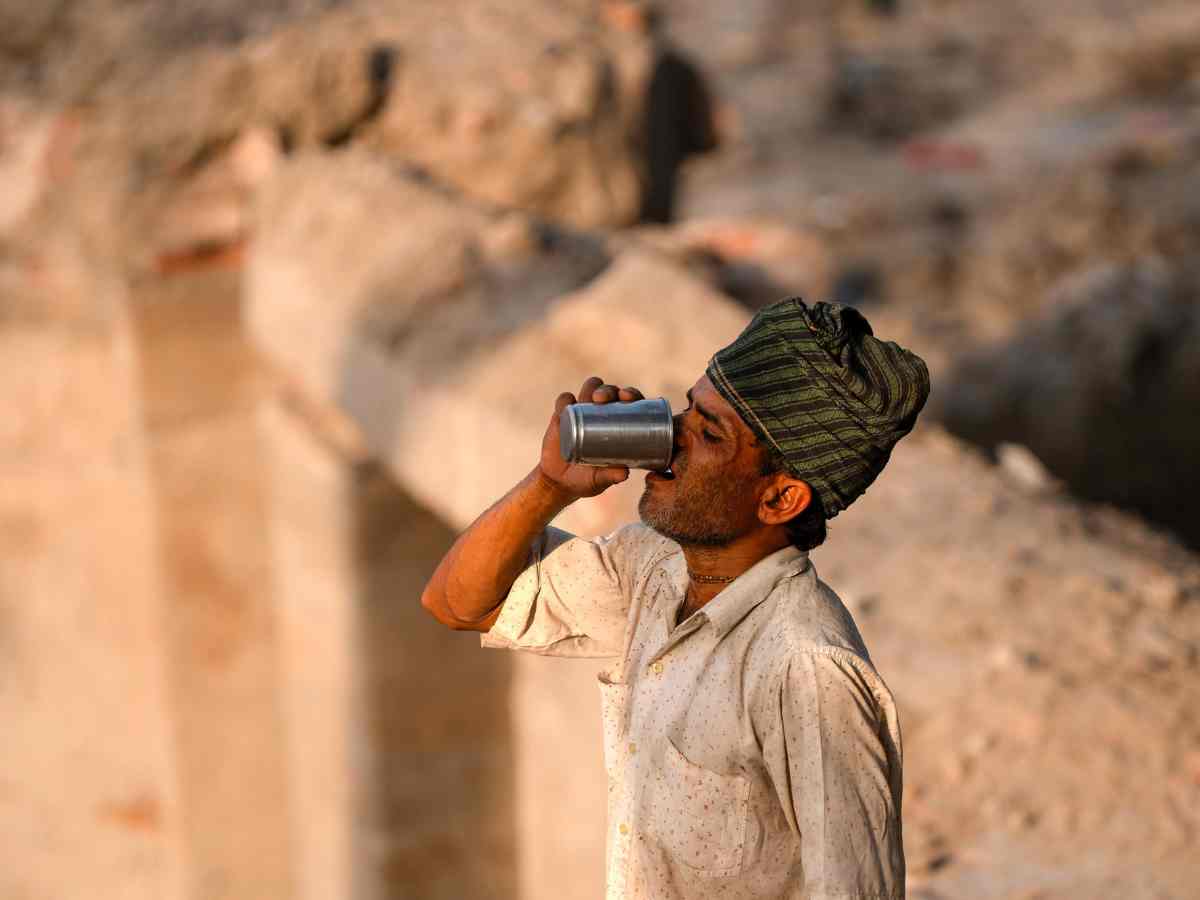
A construction worker quenches his thirst as he takes a break, amid the ongoing intense heatwave on a hot summer day along the bank of the river Yamuna, in New Delhi. (Getty)
Delhi heat: Mungeshpur, an area in North West Delhi, experienced a maximum temperature of 52.3 degrees Celsius on Wednesday, marking the highest temperature ever recorded in the city, according to India Meteorological Department (IMD).
This follows an already extreme reading of 49.9 degrees Celsius in the same locality on Tuesday. The temperature spike to 52.3 degrees Celsius was recorded at 4:14 pm, as per the data available on the official website.
An official from the IMD confirmed that this temperature is the highest ever recorded in Delhi.
Also read: Delhi almost touches 50 degree C as heatwave intensifies
This extreme heat has significantly increased Delhi’s power demand. According to the State Load Despatch Centre (SLDC) data, Delhi’s peak power demand soared to an all-time high of 8,302 MW at 3:36 PM today. This surpasses the previous record of 8,000 MW set just a week earlier on May 22. The previous peak before these records was 7,695 MW on June 29, 2022.
Delhi has seen its peak power demand exceed 7,000 MW for the 12th consecutive day, a milestone that had never been reached in May prior to this year. Typically, the peak demand period falls between late June and early July, with the previous peak in May occurring this year only.
The sustained high demand is testament to the robustness of Delhi’s power distribution network. The primary drivers of this demand surge are the weather conditions prompting residents to use more air conditioning and coolers. Notably, air conditioning can account for 30-50% of a household’s or company’s annual energy expenses.
In terms of regional power demand, BRPL (covering South and West Delhi) and BYPL (covering East and Central Delhi) have effectively managed their peak demands. BRPL’s area is expected to see a peak demand of around 3,680 MW this summer, up from 3,250 MW and 3,389 MW in 2023 and 2022 respectively. Similarly, BYPL’s area anticipates a peak of about 1,860 MW, compared to 1,670 MW and 1,752 MW in the past two years.
Ensuring reliable power supply
To meet the burgeoning power demand, BSES discoms have put robust measures in place. These include long-term Power Purchase Agreements (PPAs), banking arrangements with other states, and the deployment of advanced technologies such as Artificial Intelligence (AI) and Machine Learning (ML) to predict power demand accurately.
Green power sources are playing a critical role in this effort, with approximately 2,100 MW of green power integrated into the grid. This includes around 840 MW of solar power from the Solar Energy Corporation of India (SECI), 500 MW of wind power, and 40 MW from waste-to-energy sources. Additionally, over 160 MW of rooftop solar power has been installed across South, West, East, and Central Delhi.
BRPL is also procuring up to 500 MW through bilateral contracts and can buy short-term power from the exchange in case of unforeseen contingencies. Advanced load-forecasting techniques using AI and ML help ensure accurate predictions and reliable supply.
Strengthening the Distribution Network
BSES discoms have invested significantly in strengthening the distribution network, employing preventive and predictive maintenance strategies. This includes thermal scanning, partial discharge measurement, and health assessments of power and distribution transformers. An online load monitoring system tracks the load on power transformers and 11kV feeders, especially during the summer months.
Court grants probe agency more time as NIA pursues wider links in Red Fort blast…
Featuring works in thread, fabric, performance and digital media, Ski(e)n examines the body as a…
Govt report shows gains in maternal health, with better care access and fewer anaemia cases…
Delhi driver murdered after petty dispute; birthday celebration turns violent, say police
Kohli has two hundreds and a fifty in his last three innings, while Rohit has…
The agency says the trio worked with foreign-based gangsters and BKI handlers who supplied explosives…